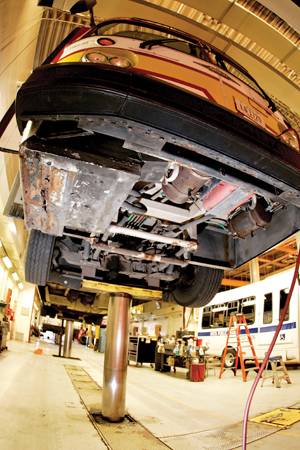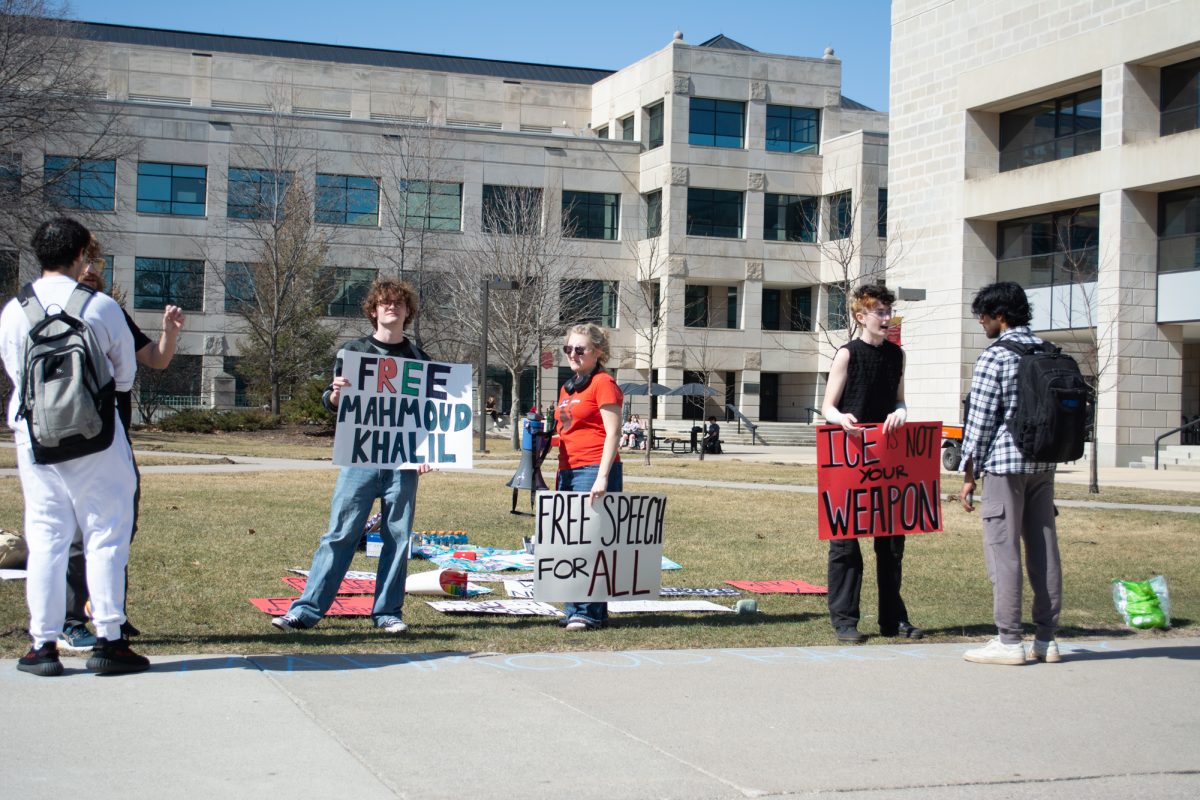CyRide has plans for improvement

CyRide Bus #981, a 1988 Orion 1 model, show signs of wear and tear as it sits on a lift in the CyRide garage on Friday, Oct. 10, 2008. According to CyRide Director Sheri Kyras, over 40% of the CyRide fleet is over 12 years old. The rust damage on the 1988 model is more serious when compared to other models in the fleet because it was originally used in Illinois, where the winter weather and road salts can cause serious harm to vehicles. Photo: Kevin Zenz/Iowa State Daily
October 23, 2008
CyRide, which drives 4.6 million riders per year, is anticipating to transport the most passengers in CyRide history this academic year.
Sheri Kyras, director of transportation for CyRide, said the high number of students utilizing the bus system will be a cause for change.
A trip planner on the CyRide Web site, Google Transit, will hopefully be available for riders to use at the start of the next school year, Kyras said. Google Transit will allow riders to plan bus trips to their desired destination more effectively. Completing the project is a major undertaking, Kyras said, because every stop and time must be recorded into the Google Transit system.
Student input is taken into consideration when dealing with improvements to CyRide, Kyras said.
Jamison Arends, freshman in pre-business and Government of the Student Body Business senator, said he hopes to see the enhancement of CyRide bus stops and shelters. As a GSB senator and member of the University Affairs committee, Arends is making efforts to start a CyRide sub-committee within University Affairs. Arends said he has had discussions with Kyras to see if some of the ideas the committee has come up with are feasible.
Arends mentioned the “weird angle” of the bus shelters and how they don’t protect from the wind. He hopes the shelters are improved by shifting the angle of the shelters, and possibly adding lights to illuminate the bus route maps so that “[students] don’t have to use their cell phones to see the map in the dark,” Arends said.
Kyras agreed with GSB regarding the bus stops and shelters.
“We have $40,000 this year and $50,000 next year to begin making those improvements to the stops so hopefully we can make it more comfortable for the students,” she said.
Kyras also mentioned adding concrete paths near the stops without shelters so students can avoid getting out of the bus and landing in mud.
Although projects are in the works, Kyras mentioned the difficulty of funding both improvements to CyRide as well as arbitrary investments, such as fuel for the 69 buses CyRide utilizes. She said the cost of fueling has “become a huge budget issue for CyRide.” The cost of fuel for one year is determined a year in advance. This year, however, CyRide did not anticipate such an increase in fuel costs.
“We’re looking at about $1.1 million in fuel expenses this year and that’s compared to $850,000 last year,” Kyras said. “Obviously, when you have that big of an impact, we’re going to have to look at what we’re going to do next year.”
Therefore, adjustments needed to be made to CyRide investment priorities. In the past, CyRide has run on 20 percent biodiesel, but keeping the system running at this number has proved challenging because biodiesel is more expensive. CyRide has cut the amount of biodiesel down to 2 percent.
Although the cost of fueling the buses has proved to be a major investment, the CyRide ridership is growing and adjustments are still needed to take into account the large number of people that utilize the buses without going over budget.
CyRide has made the decision to purchase a number of “new and used” buses from southern states. These buses were previously owned and used, but will be purchased and “adjusted to CyRide standards.”






